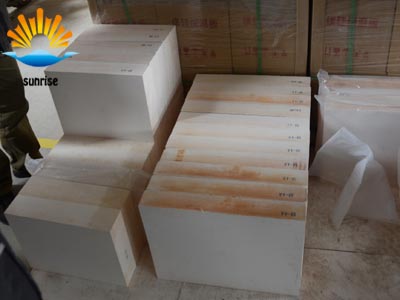Product
Fused Cast AZS Block
AZS Casting Type
AZS Ramming Materials
Fused Cast AZS TY-AZS41
Fused Cast AZS TY-AZS36
Fused Cast AZS TY-AZS33
Fused Cast Alumina Block
Fused cast Alumina Block TY-H
Fused cast Alumina Block TY-A
Fused cast Alumina Block TY-M
Fused Cast High Zirconia Block
Fused Cast Skid Rail Block
Silica brick
Magnesia Series Brick
Bonded Refractory Block
High alumina And Fire clay bricks
Insulation Series Brick
Ceramic Fiber Products
Contact Details
- 0086 371 63838939
- 0086 371 63835539
- sales@sunriserefr.com
- tkfanyi
- No.36 Fengchan Road, Zhengzhou City
Solutions
Glass kiln with refractory general form of damage
- More related products
- Fused Cast AZS Block
- Fused Cast Alumina Block
- Fused Cast High Zirconia Block
- Fused Cast Skid Rail Block
Glass kiln refractory used in the process of damage, not only the slag erosion (continuous), but also fracture and picks (non-continuous type) factor. After a comprehensive analysis of the results of the use of refractory materials for glass kilns, the way of damage during use can be summarized into three basic forms.
1, Due to the mechanical stress and thermal stress of the structure, the glass kiln is damaged by irregular cracks (thermal and mechanical peeling or flaking) on the refractory lining.
2, Due to the continuous scouring of the molten glass, the infiltration of molten slag and the temperature fluctuation on the hot surface (working surface), the structure of the fused zirconia corundum brick is changed, and thus the unique metamorphic layer is formed. In the original layer and the metamorphic layer The interface with the heating surface parallel to the crack and damage.
3, due to the glass melt, slag and soot reaction and melt flow and wear, mainly due to the liquid phase and AZS brick surface layer of corrosion.
Refractory glass kiln used in the process, in fact, is thermodynamically unstable. Therefore, the direction of the research and development of refractories for glass kilns is to establish a kinetic barrier within (and in the vicinity of) the refractory to resist the deterioration caused by the eventual irreversible structural and compositional changes


Read more
Need more information? Drop us a line
For more information on any of our products please get in touch using the form below. One of our sales team will respond to your enquiry as soon as possible.
Copyright © 2014 Zhengzhou Sunrise Refractory Co., Ltd. Site Index Product IndexSitemap









